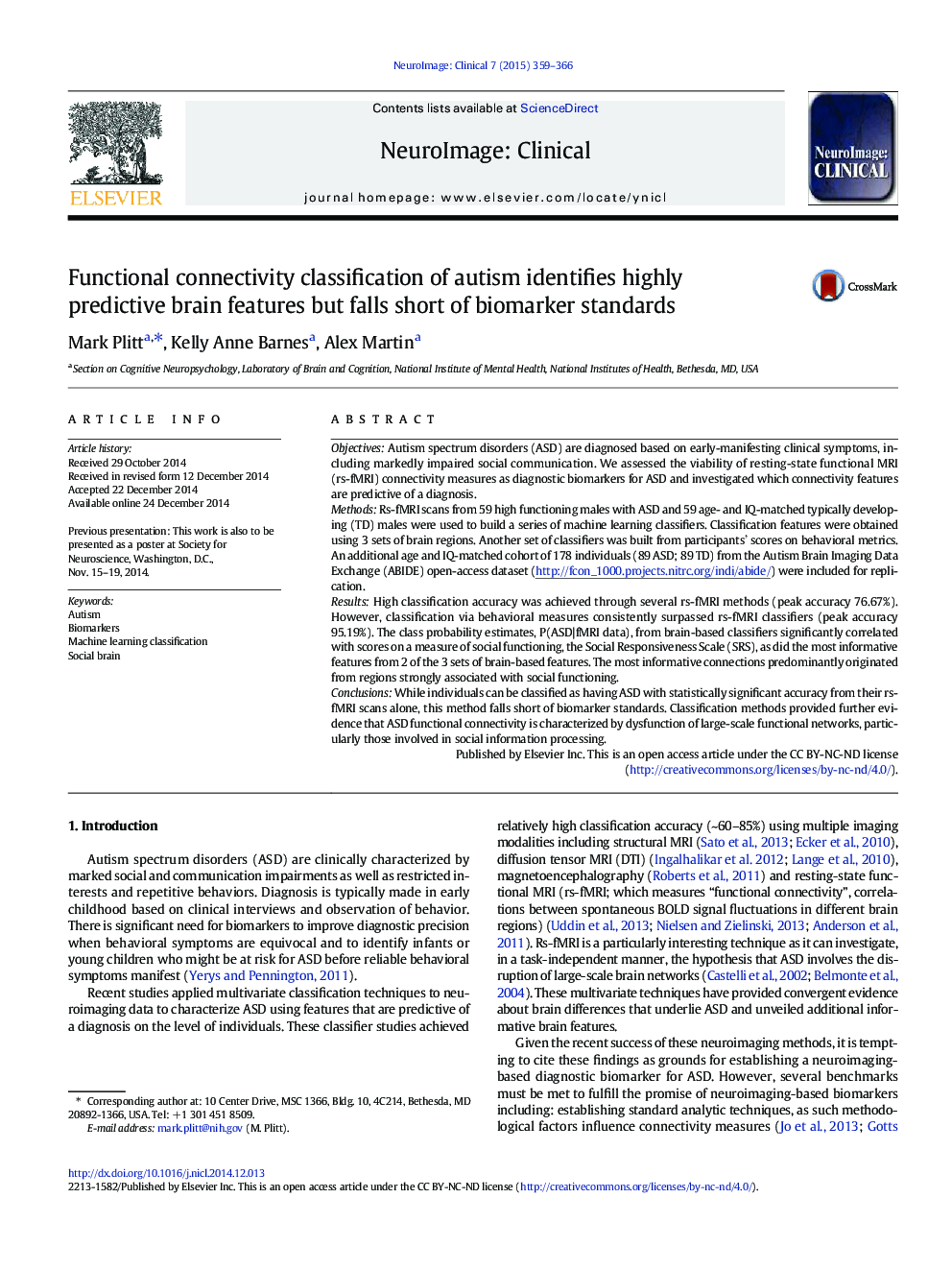| کد مقاله | کد نشریه | سال انتشار | مقاله انگلیسی | نسخه تمام متن |
|---|---|---|---|---|
| 3075089 | 1580960 | 2015 | 8 صفحه PDF | دانلود رایگان |
• We distinguish rs-fMRI scans from ASD and TD individuals with high accuracy.
• ASD versus TD classification using behavioral metrics was much more accurate.
• Highly predictive brain features largely originated from the canonical social brain.
• High performing brain features also correlated with individual symptom severity.
ObjectivesAutism spectrum disorders (ASD) are diagnosed based on early-manifesting clinical symptoms, including markedly impaired social communication. We assessed the viability of resting-state functional MRI (rs-fMRI) connectivity measures as diagnostic biomarkers for ASD and investigated which connectivity features are predictive of a diagnosis.MethodsRs-fMRI scans from 59 high functioning males with ASD and 59 age- and IQ-matched typically developing (TD) males were used to build a series of machine learning classifiers. Classification features were obtained using 3 sets of brain regions. Another set of classifiers was built from participants' scores on behavioral metrics. An additional age and IQ-matched cohort of 178 individuals (89 ASD; 89 TD) from the Autism Brain Imaging Data Exchange (ABIDE) open-access dataset (http://fcon_1000.projects.nitrc.org/indi/abide/) were included for replication.ResultsHigh classification accuracy was achieved through several rs-fMRI methods (peak accuracy 76.67%). However, classification via behavioral measures consistently surpassed rs-fMRI classifiers (peak accuracy 95.19%). The class probability estimates, P(ASD|fMRI data), from brain-based classifiers significantly correlated with scores on a measure of social functioning, the Social Responsiveness Scale (SRS), as did the most informative features from 2 of the 3 sets of brain-based features. The most informative connections predominantly originated from regions strongly associated with social functioning.ConclusionsWhile individuals can be classified as having ASD with statistically significant accuracy from their rs-fMRI scans alone, this method falls short of biomarker standards. Classification methods provided further evidence that ASD functional connectivity is characterized by dysfunction of large-scale functional networks, particularly those involved in social information processing.
Journal: NeuroImage: Clinical - Volume 7, 2015, Pages 359–366
